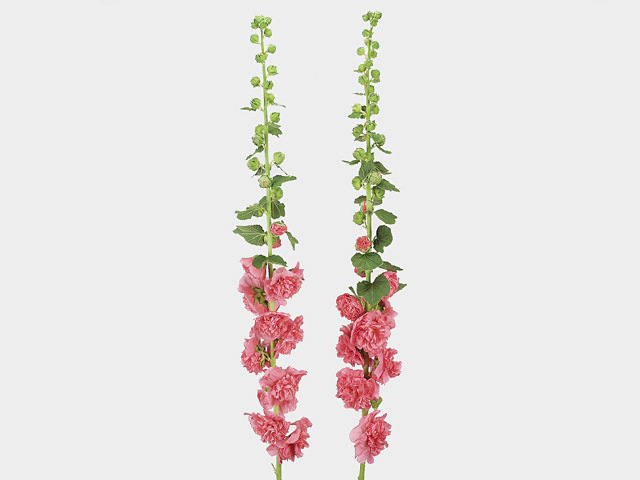Alcea rosea other

| Flower scent | Unscented; Unscented; Unscented; Unscented |
| Flower color | Pink-light orange pink-027C; Pink-medium blue pink-068B; White-white-155D; White-white-155D |
| Soil fertility | No poor soils; No poor soils; No poor soils |
| Light conditions | Sunny; Sunny; Sunny |
| Moisture requirements | Well-drained; Well-drained; Well-drained |
Alcea rosea, commonly known as hollyhock, is a beautiful flowering plant that adds a touch of elegance to any garden or landscape. While it may not offer a particularly strong scent, its gorgeous blooms more than make up for it. The color palette of this plant is quite varied, ranging from pink-light orange to pink-medium blue and even white.
One of the interesting characteristics of hollyhocks is their ability to adapt to various soil conditions. They thrive in fertile soils and do not tolerate poor soils well. Therefore, it is advisable to provide them with well-drained soil that is rich in nutrients. This will ensure healthier and more vibrant blooms.
In terms of light conditions, hollyhocks prefer full sun. They thrive when exposed to long hours of sunlight, making them an excellent choice for sunny areas of your garden. If you have a spot that receives ample sunlight throughout the day, planting hollyhocks there will showcase their beauty to the fullest.
Another essential aspect to consider when growing hollyhocks is moisture requirements. These plants prefer well-drained soil, meaning that the soil should not become waterlogged. It is important to strike a balance between providing enough water for their growth and avoiding excessive watering, which can lead to root rot.
Hollyhocks are best grown from seeds, which can be sown directly into the garden soil. They have a relatively long growing season, often taking around two years to reach their full height and bloom. Therefore, patience is key when growing hollyhocks.
Once established, hollyhocks can reach impressive heights, often surpassing six feet. Their tall and stately presence makes them ideal for adding vertical interest to your garden beds. Additionally, their colorful flowers attract butterflies, bees, and hummingbirds, making them a delightful addition to any pollinator-friendly garden.
These sturdy plants are also relatively low-maintenance. While occasional pruning and removal of spent flowers can help promote continuous blooms, hollyhocks generally require minimal care. However, it is important to monitor for common garden pests, such as aphids and Japanese beetles, which may occasionally attack the leaves and flowers.
In conclusion, Alcea rosea, or hollyhocks, may not possess a strong fragrance, but their captivating range of colors and impressive height make them stand out in any garden. With their preference for sunny and well-drained locations, these plants are a perfect choice for adding beauty and elegance to your outdoor space. So why not consider planting some hollyhocks and enjoy their stunning blooms for years to come?